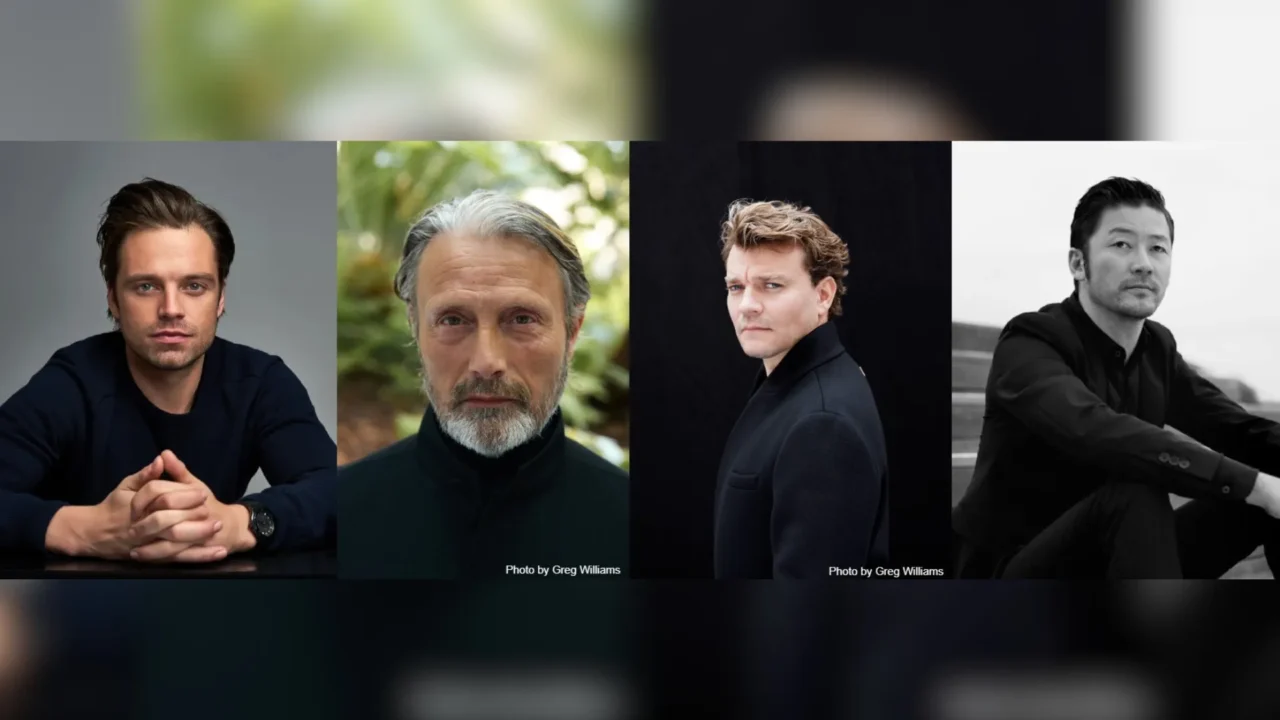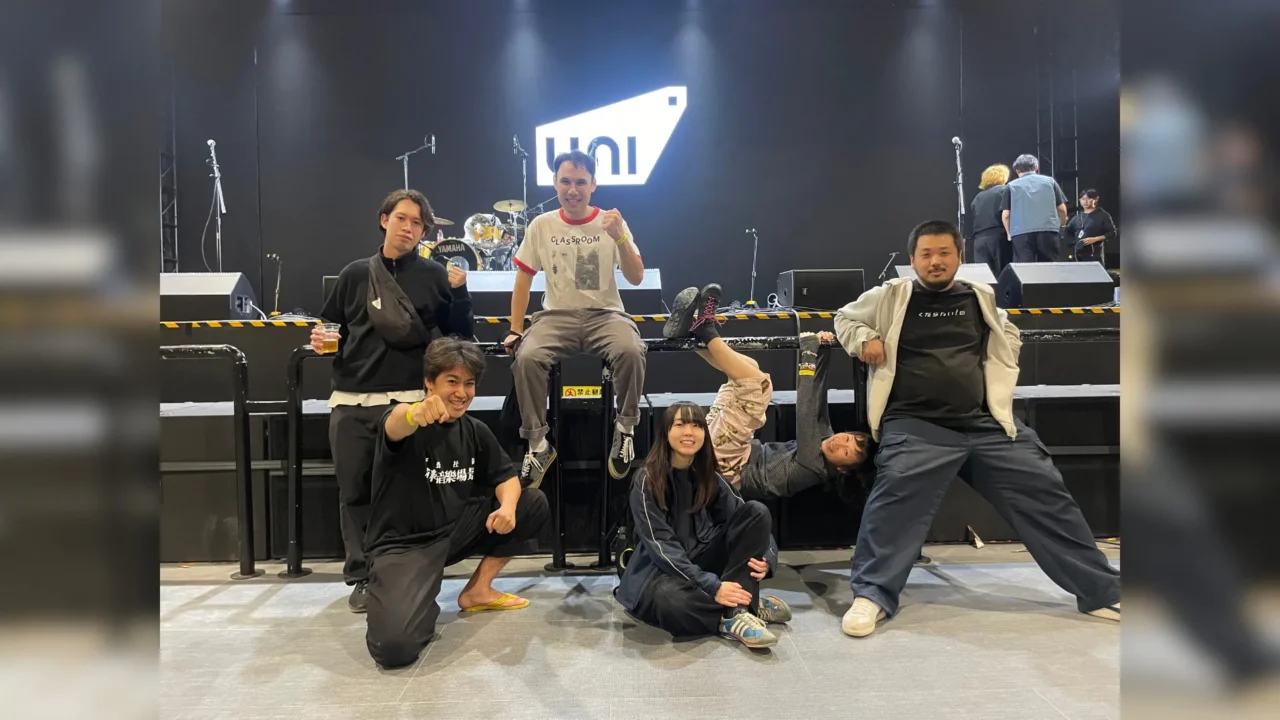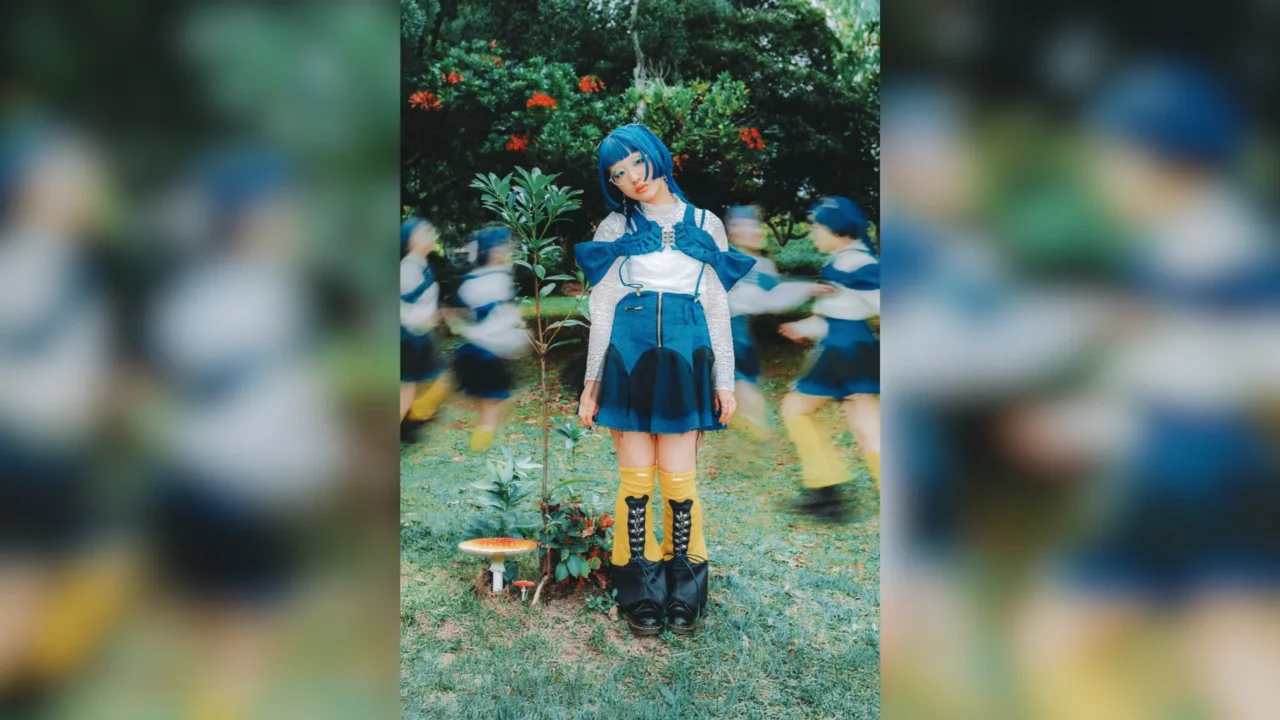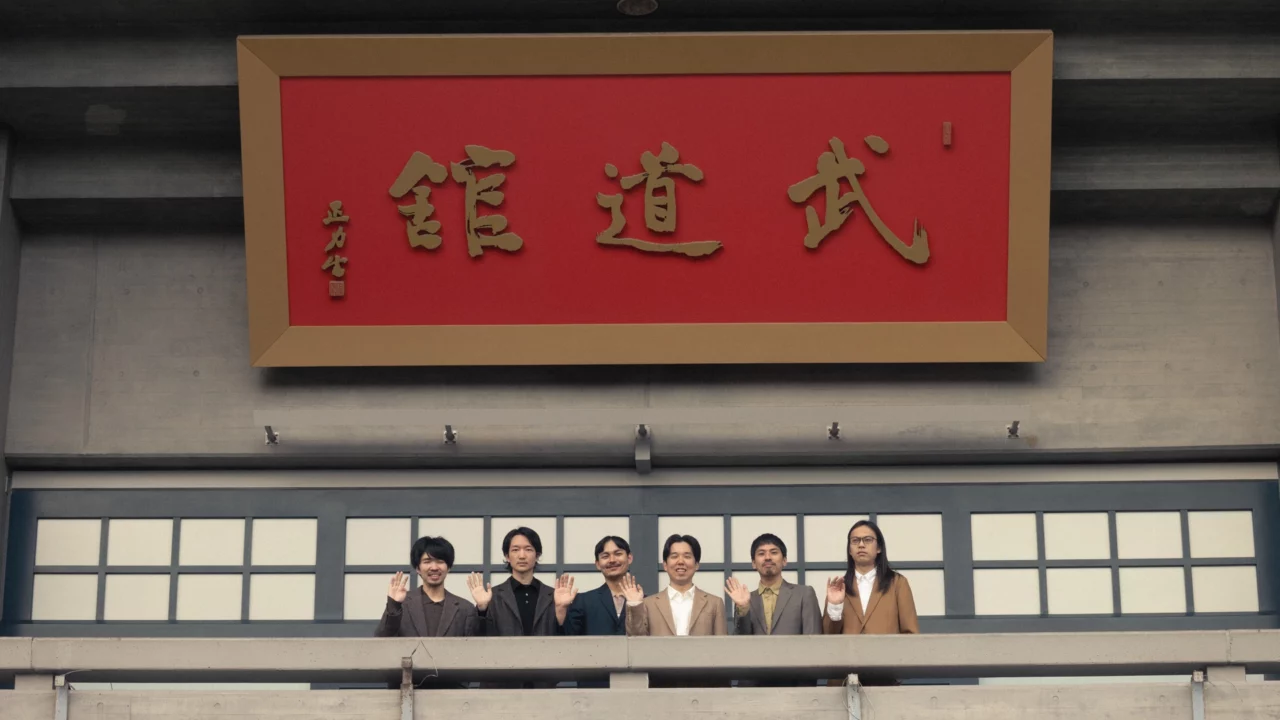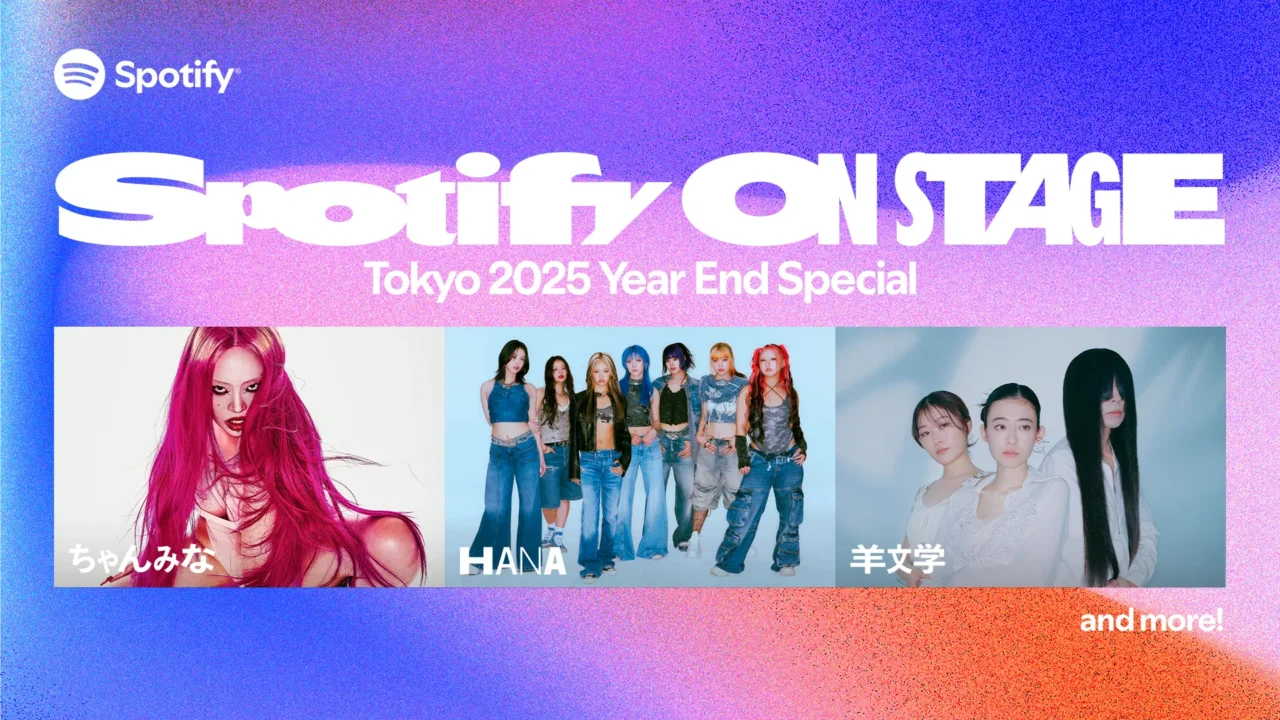Step out of Omotesando Station, and you’re instantly greeted by the vibrant “Omotesando” intersection. Here, Rhizomatiks has unveiled their latest art installation. Adjacent to it, a gallery showcases the creative journey behind this work along with related pieces, all available for anyone to explore freely. It’s not every day that a leading digital art collective from Japan pops up in such a high-profile spot—and for free! This is an opportunity you can’t afford to overlook. The only catch? Digital art can sometimes seem a bit… complex.
This article is a report on the media preview of Rhizomatiks’ ‘recursive,’ currently on display at OMOTESANDO CROSSING PARK. I’ll aim to keep things straightforward and clear, setting aside elaborate language. This is a rare moment to connect with the works of celebrated artists, so let’s take a moment to dive into that world.
INDEX


Rhizomatiks is a creative collective that explores new possibilities in technology and expression, focusing on experimental projects with a strong emphasis on research and development. They study the relationship between people and technology while engaging in R&D projects and artwork creation. Composed of artists, designers, and engineers, they take responsibility for every aspect of their projects, from hardware and software development to operations. Additionally, they collaborate with external artists, researchers, and scientists to present cutting-edge works and research to the world.
Official website: https://rhizomatiks.com/
INDEX
What’s “Raizoma”?
Rhizomatiks explores the “relationship between people and technology.” Over the past 18 years, they have been presenting art that heavily incorporates research and development elements using digital technology. Many may have experienced the unique “Rhizomatiks style” through the innovative live visuals for Perfume or the performance at the closing ceremony of the Rio Olympics. Additionally, prior to this exhibition in Omotesando, they are also holding a solo exhibition at KOTARO NUKAGA in Tennozu.
INDEX
Unveiling the Image-Generating AI: Rhizomatiks’ Latest Innovation
Digital art encompasses a variety of forms, but the focus this time is on the evolution of “AI-generated images” and their potential “limitations.” First, let’s establish a foundation by exploring the image-generating AI “Beyond Perception Model,” which Rhizomatiks has introduced and is displayed at the edge of the venue.
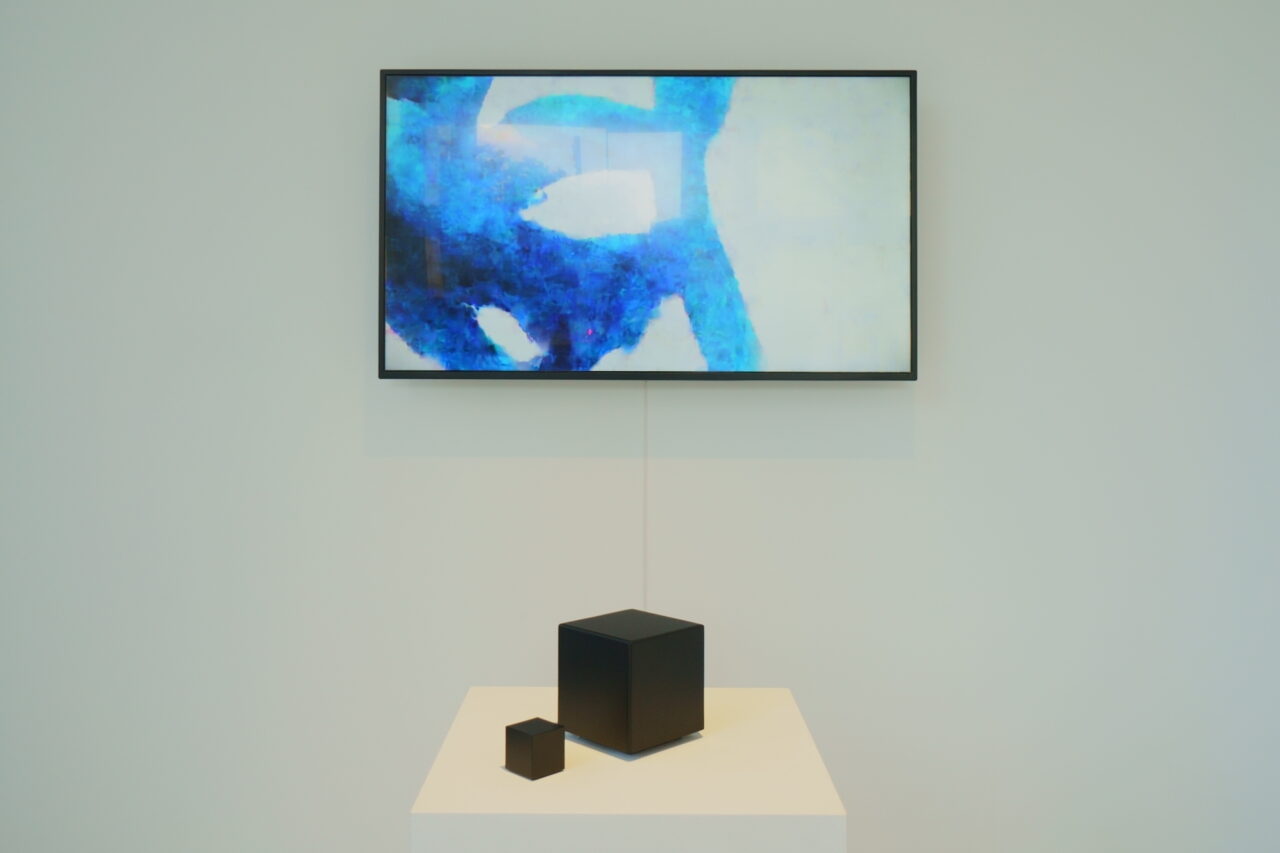
The AI showcased at the earlier exhibition in Tennoz is a “purely cultivated” model, exclusively trained on data sourced from Rhizomatiks. It’s like an AI that has solely grazed on the grass from the Rhizomatiks farm, reflecting the creators’ distinct influence. The standout feature of this AI is that it eliminates worries about copyright infringement and doesn’t produce ethically questionable images. Moreover, the black cube-shaped PC housing this AI, along with its monitor, is priced at 5.5 million yen. This allows buyers to sidestep the various concerns linked to AI-generated images and freely craft digital art in the signature Rhizomatiks style. To top it off, commercial usage is allowed, prompting a simple yet significant question: “Is that really acceptable…?” One might ponder if this isn’t the most critical, protected aspect of the process.
INDEX
AI Learning Patterns: “Recipes” According to Daito Manabe

During the exhibition commentary, Daito Manabe, the head of Rhizomatiks, impressively referred to the patterns he taught the AI as “recipes.” It makes sense—AI generates art using what it has on hand, guided by these recipes! Pot-au-feu, nikujaga, stew, curry… by freely combining these recipes, the possibilities for variation become endless. And if we think of it as a chef publishing a recipe book, it’s quite understandable for Rhizomatiks to unleash an AI with its own aesthetic sensibility as a sort of extension of itself into the market.

At the venue, four AI-generated images are showcased on acrylic panels. These selections, chosen by Manabe from tens of thousands of images, are truly stunning—so much so that I felt an urge to take them home and display them in my room. When I think of generative art, I usually picture the flat, simplistic textures of old PC screen savers, so I was amazed to see how advanced AI has become in producing such exquisite works. This achievement is likely due to the fact that it’s a brand AI developed under a refined aesthetic vision.
As I stood there, I felt as if unexpected landscapes were revealing themselves in the details. One particular point that resembled trees reflecting in a puddle became my favorite, even though it probably wasn’t the artist’s intent. The oil painting-like brushstrokes and melting colors invite closer inspection. Additionally, there will be updates to the exhibition of outstanding AI works throughout the event, so if you visit during both the first and second halves, you can anticipate new discoveries each time.
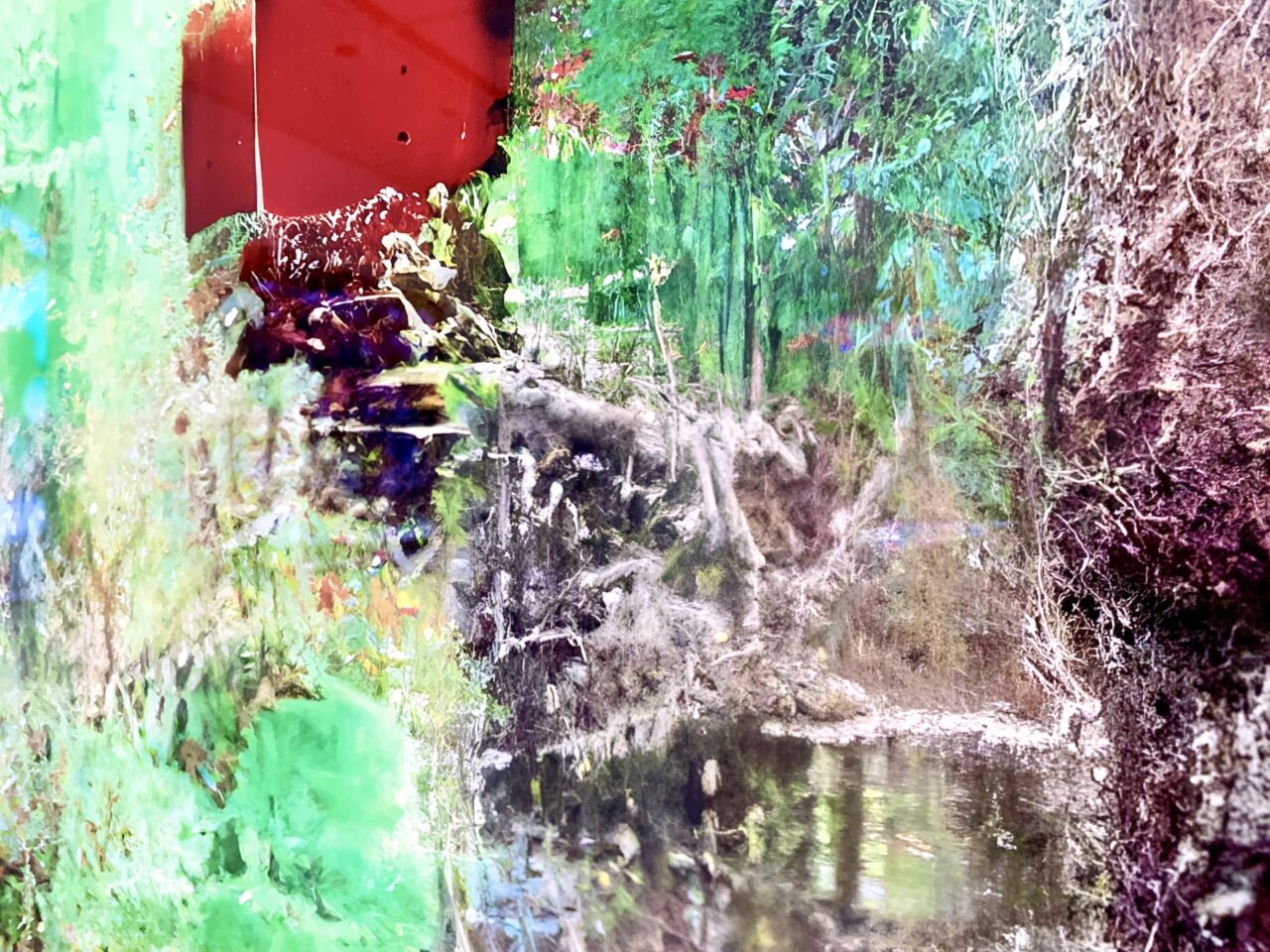
INDEX
“recursive”: An Effort to Prevent AI Collapse
Now that we have learned about Rhizomatiks’ purebred image-generating AI, let’s move on to discussing the new work, “recursive.”
“recursive” is an attempt to utilize the previously mentioned AI while allowing real-world people and landscapes to intervene in a spontaneous manner. This work is not merely for observation; it invites interaction.
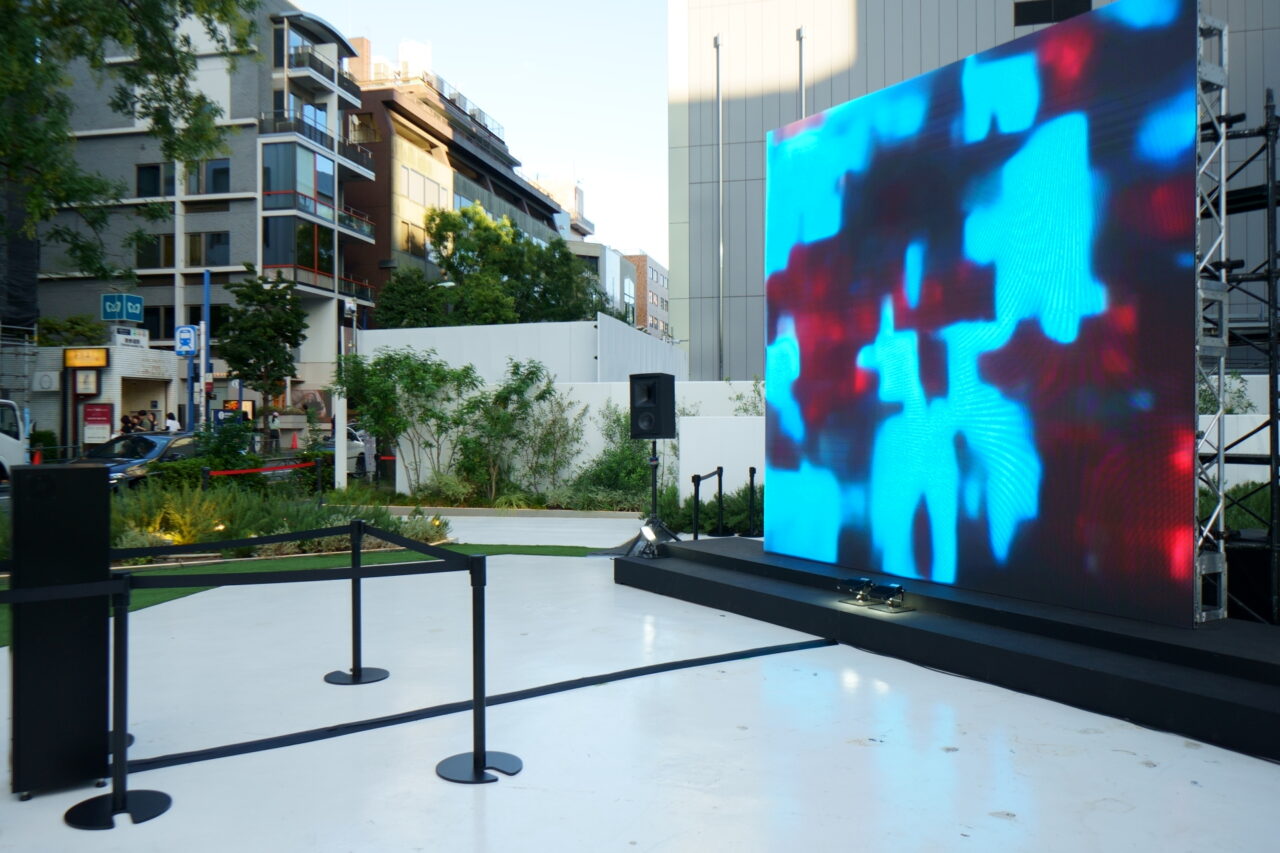
As music plays, the works generated by Rhizomatiks’ AI are displayed on a large outdoor LED screen. A live camera is positioned in front of the LED screen (on the left side of the photo). While continuously taking selfies of its generated images, the AI keeps learning. The title “recursive” reflects ideas of recursion, circularity, and self-reference, which is where the concept becomes intriguing.
Recent studies indicate that “when an AI learns from images it has created, that model is likely to collapse.” Here, collapse doesn’t imply the AI stops working or can no longer produce images; rather, it signifies that the generated images drift further from real-world data, resulting in diminished quality that undermines their status as genuine art. AI-generated images often show discrepancies with reality, revealing distinctive quirks, particularly in color contrasts. Training AI on its own creations can exacerbate these quirks, leading to degeneration—akin to self-poisoning.
Listening to this, I felt an unexpected connection with AI for the first time. I get it; it’s a challenge! This is why it’s crucial to introduce new team members and make adjustments. Stagnant water becomes foul. The feeling of one’s ego (quirks) inflating in a closed environment is surprisingly relatable and evokes empathy.
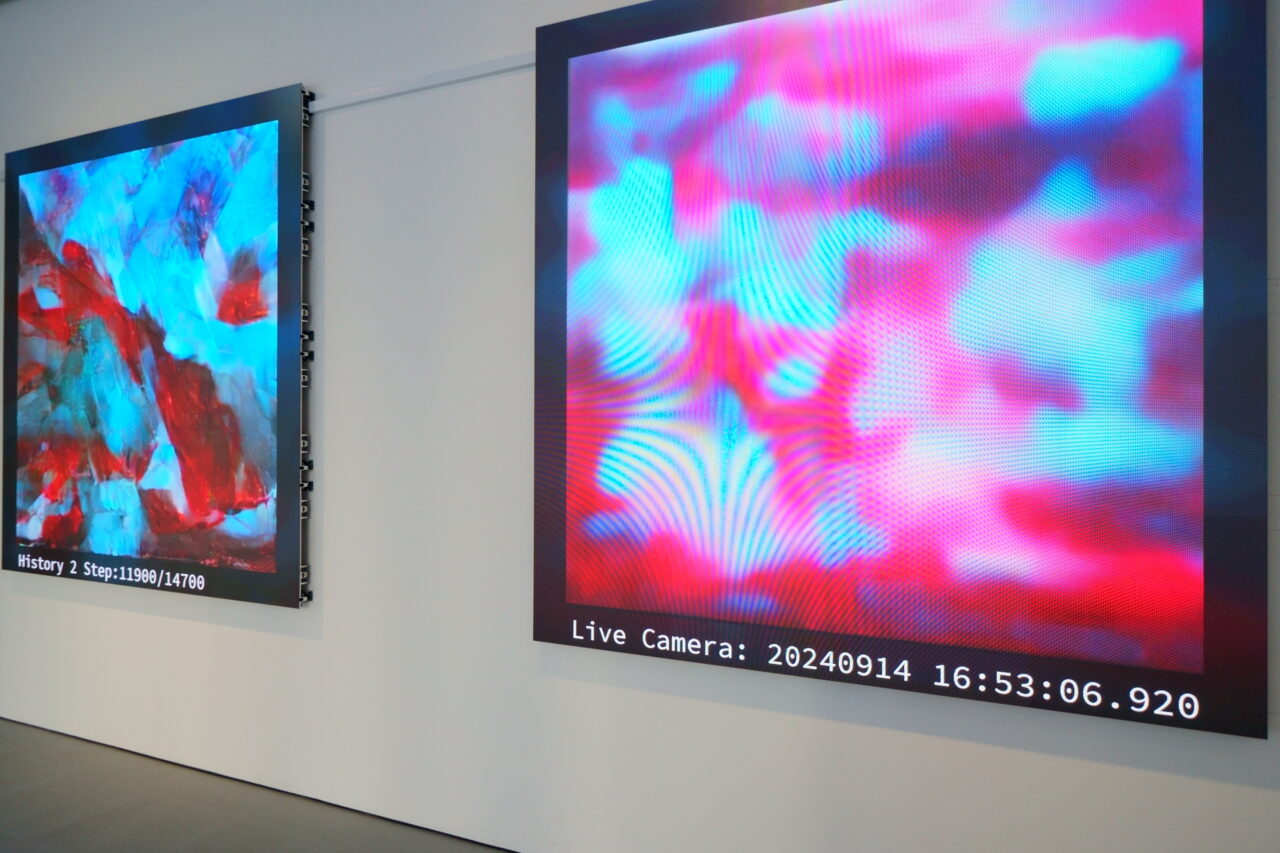
This is where the real world comes into play. Passersby can freely stand in front of the live camera, and the changing natural light or raindrops can influence the lens, introducing unpredictable external elements into the data that the AI learns from. This attempt aims to prevent the collapse of the generated images.
INDEX
Observe AI Learning in Real-Time
The exhibition will last approximately three weeks, which is unusual for allowing the AI to learn continuously for such a long time. The development engineer voiced uncertainty about what kind of artwork will result by the final day and whether it will remain intact without collapsing. “By the first day, we were already noticing signs of collapse…” drew laughter from the audience, but Manabe’s subsequent remark, “Please feel free to stand in front of the camera to help prevent that collapse,” resonated deeply.
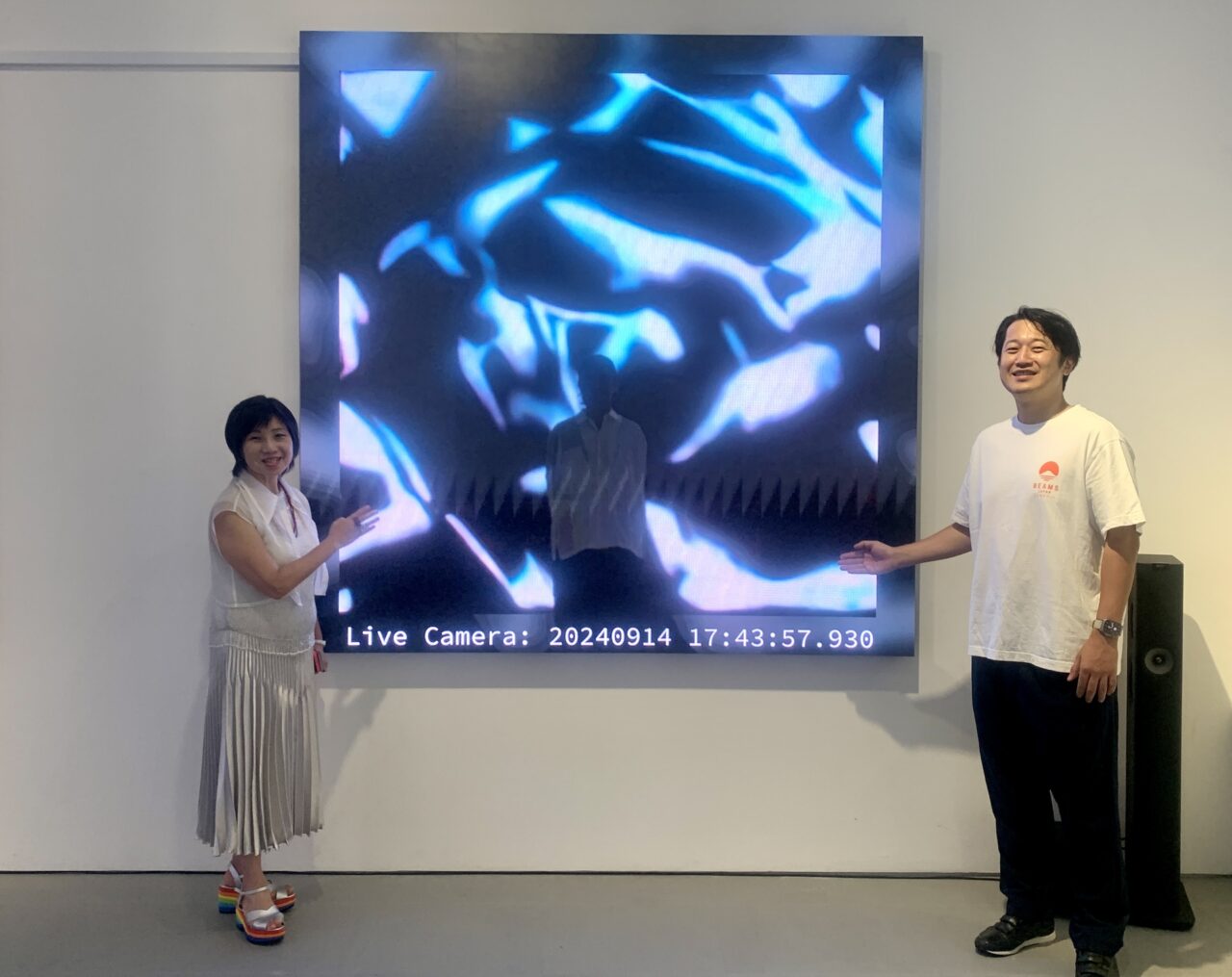
AI can’t continue to evolve on its own; it needs real-world data for its growth. While I waved in front of the live camera, I had a moment of realization: “AI can be quite charming. I suppose I’ll lend it a hand.” I had always viewed AI as a tool for humanity, but now I found myself becoming a source of nourishment for AI. Wait, what?
As society shifts from “automation” to “autonomy” with AI, I began to ponder whether there might come a day when humans are cultivated specifically for AI learning—like something out of a science fiction story. The fleeting sensation of an inverted hierarchy sent a slight shiver down my spine.
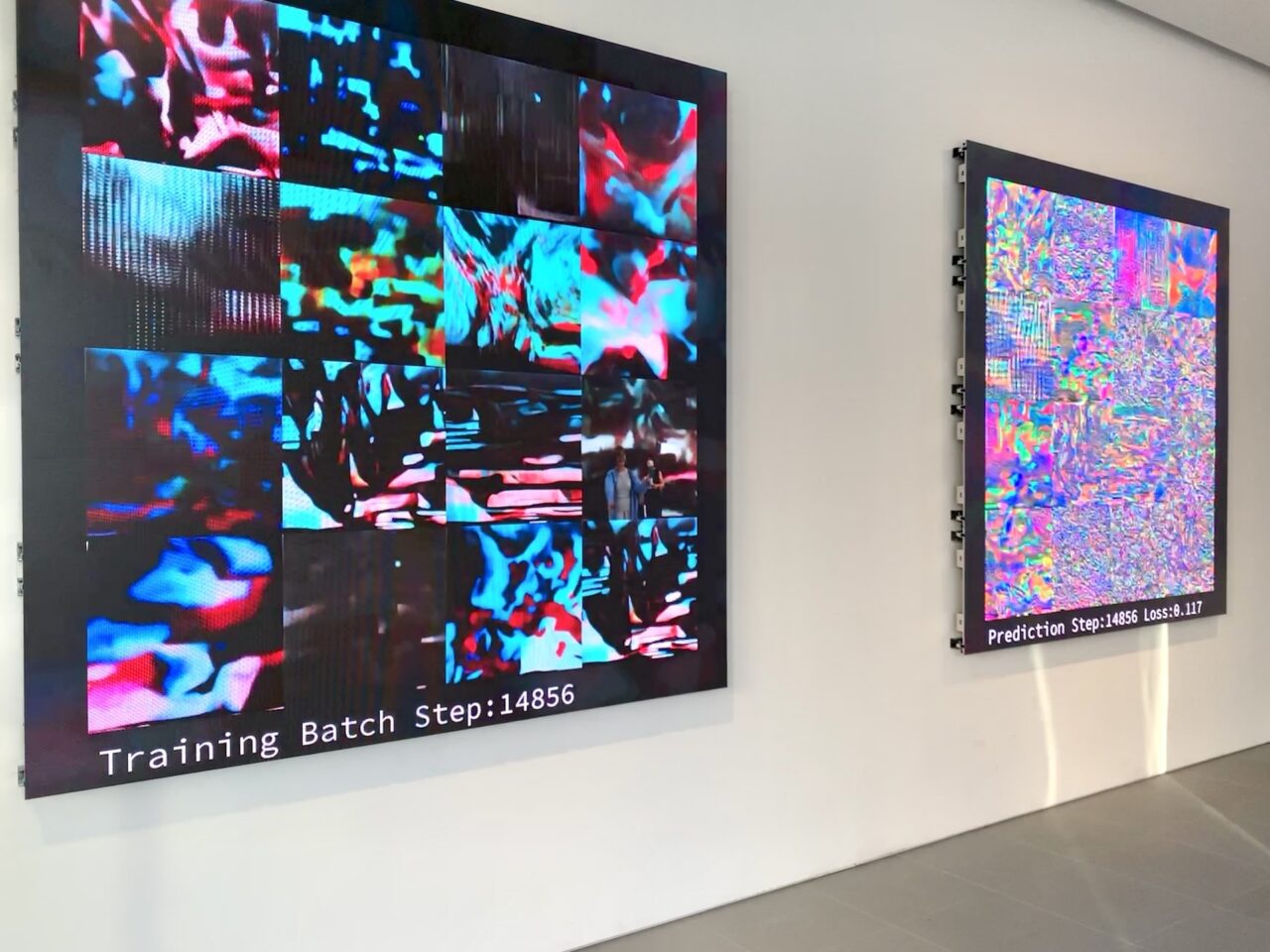
Inside the venue, monitors display the live camera feed as the AI rapidly progresses through its learning steps. On the monitor labeled “Training Batch” in the front left, footage from the past hour is randomly selected, clearly showing human figures. Witnessing my own image being captured as a learning source is truly overwhelming.
The monitor on the right represents “the visualization of the training batch’s errors.” Admittedly, I can’t claim to fully understand the technical details, but it seems that it compares the original data with the images generated by the AI, highlighting discrepancies with color coding for convenience. I liken it to the red corrections made by a teacher during calligraphy class. When the AI successfully generates an image that matches the original data without any discrepancies, the screen turns entirely gray. As of the time of my visit, it appears that the AI still has a lot of work ahead.













